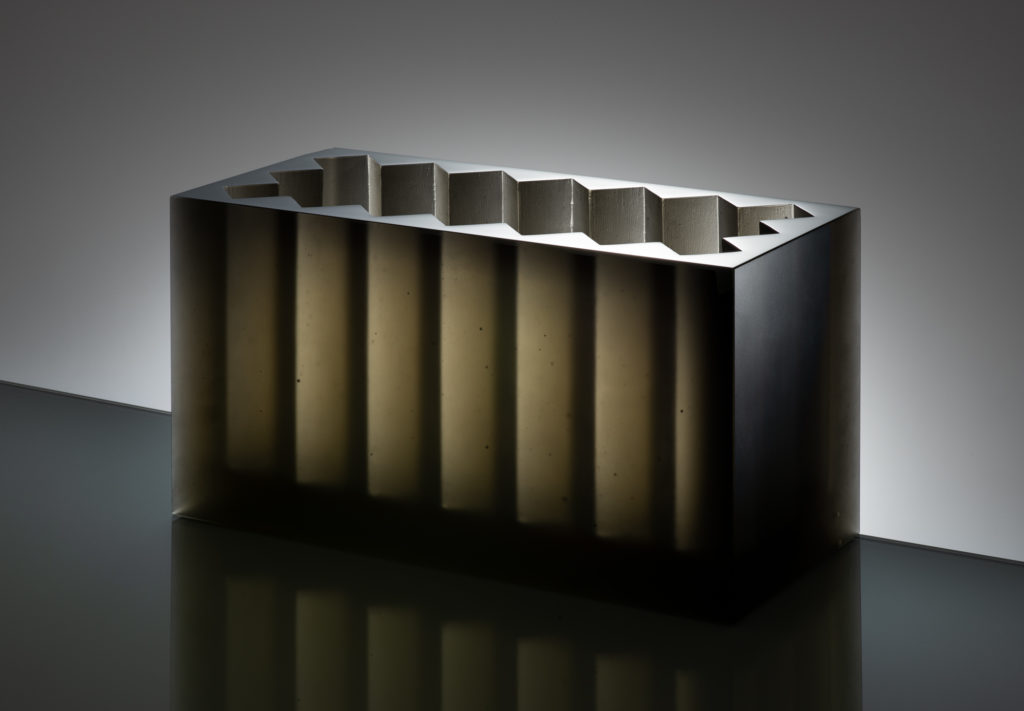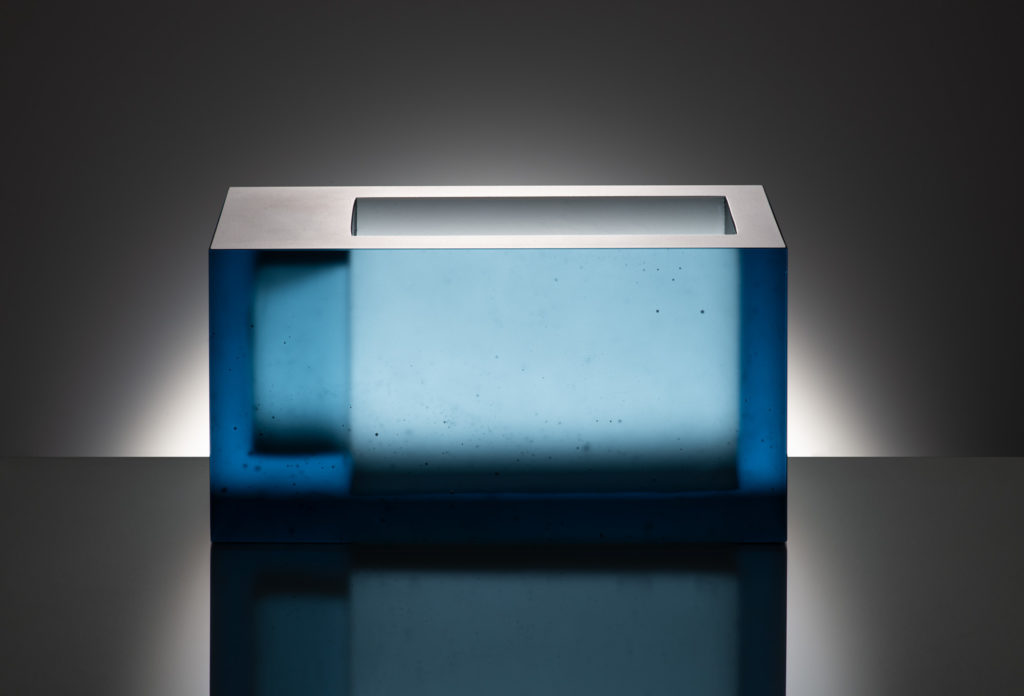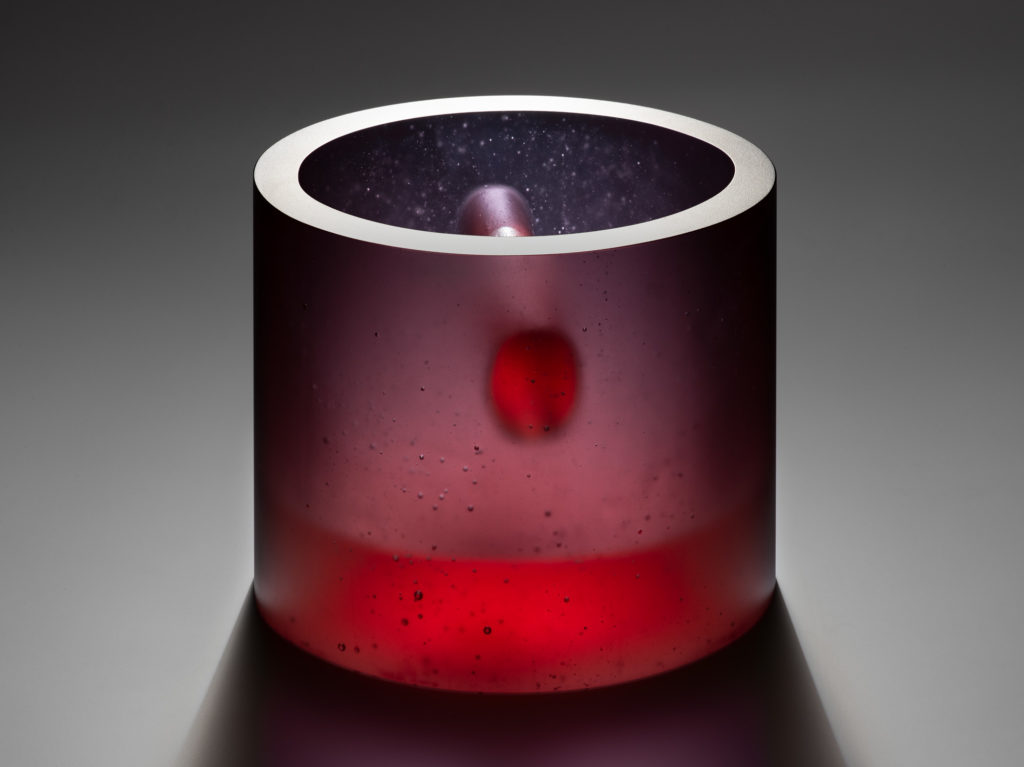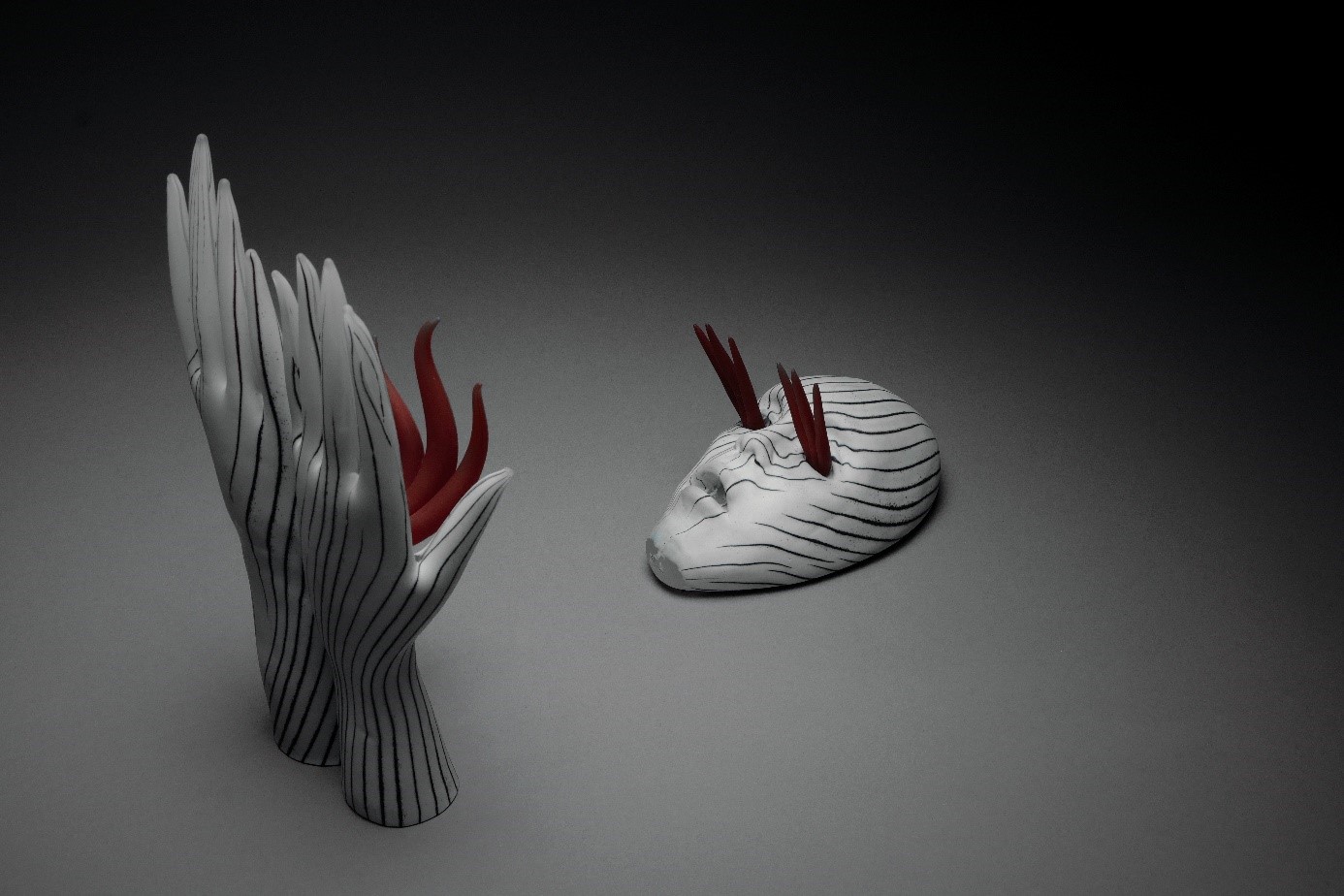17/06/2022 – 12/08/2022

PORTICUS, 2022, Mould melted glass, 46X21X24 CM Photo © František Nikl
Not a shadow play in the conventional sense of the word – given that no shadows are being cast on a background surface – rather, at play here is a coexistence between light and shadow within the body of a glass art object. Simplistic and increasingly minimalist forms offer few clues to the considerable efforts by Švitorková to meticulously craft her works from the outset of the design phase all the way to completion. Such a mould-melting technique requires complex and sophisticated calculations of the component parts of the given work, factoring in deliberate glass thinning and thickening so as to yield a purposeful interplay of parts imbued with light and shadow. Comparable effects are out of the question through any other type of glass processing technique; which, in itself, serves as a testament to the enduring nature of the choice, by numerous artists, to use such a complex, time-consuming and expensive technology for more than sixty years.

LOCUS, 2022, Mould melted glass, 38X16X21 CM, Photo © František Nikl
Prime examples of these fused sculptures are found in the works of glass artists Stanislav Libenský and Jaroslava Brychtová. But numerous other contemporary Czech artists have demonstrated a remarkable dexterity in terms of independently building upon this unique technological approach. Developments in the field of fused glass continue apace – with little sign of approaching creative ennui. Studio Lhotský s.r.o. in Pelechov, a village by the northern Bohemian town of Železný Brod, has become a key site for the realisation of such works. With its large furnaces, the site offers Lucie K. Švitorková space to both design and produce her works – not to mention working as a production manager for the firm.

NEXUM, 2022, Mould melted glass, 26X21X22 CM, Photo © František Nikl
The collection of Lucie K. Švitorková sculptures that has been specially created for Galerie Kuzebauch serves as the best possible testament to the fact that this methodology continues to offer plentiful opportunities to those imbued with a spirit of artistic innovation. In the case of this artist, that means polishing the surfaces of cylindrical objects, or of containers and jardinière of various heights, and a delightfully surprising array of internal storytelling whose rays battle to pierce through opaque and transparent glass, including benefiting from the application of a “thick glass bottom” approach. Increasingly, Lucie K. Švitorková has been replacing previous subtle internal décor approaches with bolder “architectonical constructions”, offering observers ever more enticing aesthetic experiences. No wonder then, that top players in the art market, such as the Paris-based Scremini Gallery, along with Prague’s Galerie Kuzebauch, have enthusiastically incorporated the artist’s works into their respective programmes for the year 2022.
Dr. Sylva Petrová, Professor Emeritus Curator, Museum of Decorative Arts in Prague

